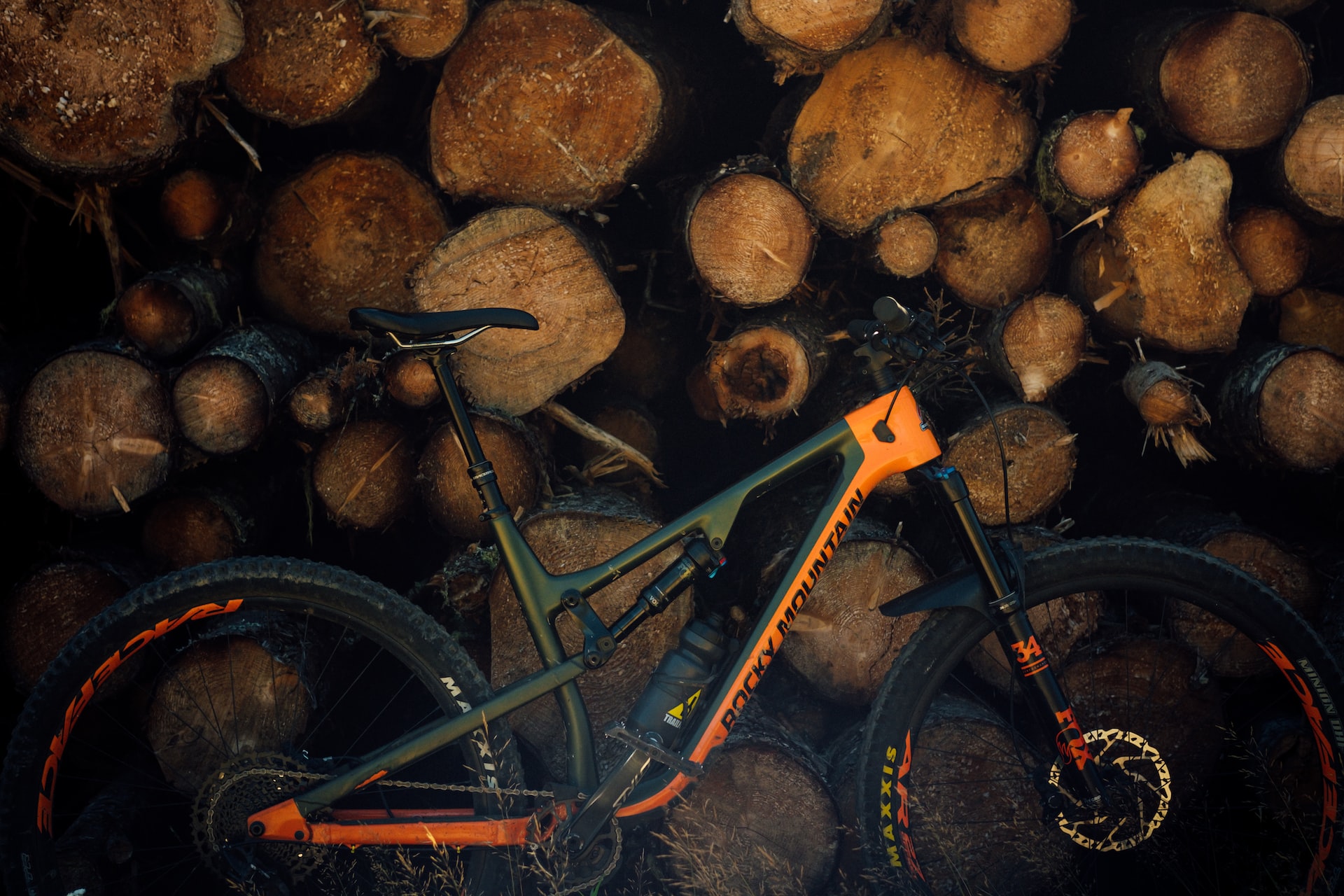Choosing the right type of mountain bike can be a difficult task. With so many different types of bikes available, it can be hard to pick the best one for you. Whether you’re a beginner or a seasoned pro, choosing the bike with the right features for your riding style is crucial. In this article, we’ll discuss the different types of mountain bikes and which one is best for you.
What is a Mountain Bike?
Mountain biking is an extreme sport that has evolved. The bare mountain bike is designed to be ridden on trails with varying degrees of difficulty, from dirt roads and flowing singletrack to more technical terrain such as roots and rocks. Mountain bikes come in various styles, sizes, and shapes to suit the needs of different riders.
Wheel Size
Mountain bikes are typically available with 29-inch, 27.5-inch, and 26-inch wheels. The 29-inch wheel provides more stability while rolling over bumps, rocks, and roots, while the smaller wheels are more maneuverable.
Suspension Style
Mountain bikes also vary by suspension style, with the traditional hardtail design being the most common. Hardtails are light and efficient but cannot absorb bumps and impacts, as well as a full-suspension bike. Full-suspension models incorporate a shock absorber in the rear frame to help absorb impacts, providing more comfort and control for the rider.
Other Features
Other features to consider when choosing a mountain bike are frame material and gearing. Aluminum and carbon fiber frames are popular, with steel and titanium frames being more economical. Gearing options include single-speed and multiple-gear systems, with gears ranging from three to 27.
Choosing the right mountain bike for your needs is essential, as the wrong style or size can significantly limit your ability to enjoy the ride. Therefore, understanding the features and benefits of each bike style will help you make the best decision.
Types of Mountain Bikes
Mountain biking is a popular recreational activity and hobby, and having the correct type of bike can make the experience even better. There are a variety of mountain bikes available, and they are divided into various categories best suited to different terrain and activities.
Cross Country Mountain Bikes
Cross-country mountain bikes are designed for long-distance off-road rides across steep terrain. Generally, these bikes are lightweight and offer efficient pedaling performance. They feature knobby tires for good grip on uneven surfaces and suspension systems to absorb shock from bumps and dips in the terrain.
Enduro Mountain Bikes
Enduro mountain bikes are similar to cross-country bikes but typically heavier and sturdier. These bikes are great for riders who like to go fast, as they provide better traction and stability on rough terrain. Enduro mountain bikes have complete suspension systems that provide more bounce than cross-country bikes, and they are often equipped with longer travel suspension and wider tires.
Trail Mountain Bikes
Trail bikes are an excellent option for riders who want an all-around bike that can handle a variety of terrain. They offer balanced performance with mid-weight frames, knobby tires, and a full-suspension system that provides good traction and shock absorption. Trail bikes often have wider handlebars, allowing for more control in the air and on tricky descents.
Fat Tire Bikes
Fat tire bikes are designed for riding on snow, sand, or other softer terrain that can be difficult to navigate with traditional mountain bikes. These bikes feature extensive tires that provide exceptional grip and shock absorption on these more challenging surfaces. Fat tire bikes are also great for riders looking for an all-around adventure bike.
Which Mountain Bike Is Right For You?
Choosing the right type of mountain bike depends on the riding you plan to do. Cross-country bikes are best for long-distance riding, while enduro bikes are better suited to fast, technical terrain. Trail bikes are excellent for all-around performance, and fat-tire bikes are perfect for tackling sand and snow. Consider the landscape and your riding style when deciding, and you’ll be sure to find the ideal mountain bike for your needs.
Hardtail Mountain Bikes
Hardtail mountain bikes are an excellent choice for a comfortable, lightweight, and affordable yet reliable ride. These bikes offer a range of benefits that make them an appealing option for novice and experienced cyclists alike.
For starters, hardtails are generally less expensive than full-suspension mountain bikes and are much lighter, making them easier to carry and store. Hardtail mountain bikes also feature less complex components, which makes them easier to maintain and repair. Hardtail mountain bikes are generally easier to ride as they require less skill to maneuver.
Disadvantages of Hardtail Mountain Bikes
While hardtails have many advantages, there are some drawbacks to consider before deciding to buy one. These bikes provide less cushioning than full-suspension mountain bikes, so that you may feel the bumps on the trail more. It can also be harder to absorb the shocks from more significant drops and jumps.
Also, hardtails don’t provide the same traction as full-suspension bikes, meaning that you may have to work harder on steep, technical trails.
Who Are Hardtail Mountain Bikes Best Suited For?
Hardtail mountain bikes are ideal for those just getting into the sport, as they are generally easier to handle and provide a great introduction to mountain biking. Due to their lightweight construction, they’re also often the preferred choice for cross-country and long-distance riders.
A hardtail is likely your best bet if you’re looking for an affordable mountain bike that’s easy to maintain and great for general trail riding. However, if you’re looking for a more technical ride and more cushioning against the bumps, you’ll probably want to opt for a full-suspension bike.
Full-Suspension Mountain Bikes
Dual-suspension mountain bikes, also known as full-suspension mountain bikes, are the ultimate ride for off-road terrain. With powerful shocks and wide tires, dual-suspension bikes offer maximum control and stability on the most demanding trails. The combination of front and rear suspension and wide tires allows for a smooth ride over rocks, roots, and other off-road obstacles. For the ultimate mountain biking experience, a dual-suspension mountain bike is a way to go.
Benefits of Dual-Suspension Mountain Bikes
Dual-suspension mountain bikes offer several benefits when it comes to hitting the trails. The suspension helps cushion the shock of rocks, roots, and other obstacles, which means you’ll be less likely to crash. The wide tires provide even more buffering by creating a better connection with the ground and are less likely to slip when riding over slick surfaces. The combination of the two makes it easier to stay in control, even on the most demanding trails.
Things to Consider When Choosing a Dual-Suspension Mountain Bike
When choosing a dual-suspension mountain bike, there are a few things to consider:
- The frame and wheel sizes should suit your height and weight.
- The wheelbase should be wide enough for you to be able to control the bike comfortably.
- The suspension should be adjustable and have enough travel (how much the wheel compresses) to handle the terrain you plan to ride.
- The drive train should be able to handle the hills you plan to tackle.
Is a Dual-Suspension Mountain Bike Right For You?
A dual-suspension mountain bike is an excellent choice if you plan to ride on technical and aggressive trails. With the combination of front and rear suspension, your ride will be smoother, and you’ll have more control. This makes it easier to stay in power and keep confident when tackling challenging trails. However, a hardtail bike may be a better choice if you’re primarily riding on flat, paved paths.
Maintenance of Dual-Suspension Mountain Bikes
Dual-suspension mountain bikes require more maintenance than hardtail bikes due to their complex suspension system. After every ride, you should check the suspension for any wear and tear and make any necessary adjustments or repairs. You should also clean the suspension system and inspect it for any damage or debris. Regular maintenance can help keep your bike performing at its best.
Fat Tire Mountain Bikes
These mountain bikes have become increasingly popular recently, especially with riders who want to tackle extreme terrain and conditions. Fat tire mountain bikes feature vast tires ranging from 4.7 to 5.5 inches in width. The wider tires increase the stability and traction of the bike, especially in situations such as snow, mud, and sand.
Benefits of Fat Tire Mountain Bikes
The wide tires of fat tire mountain bikes make them ideal for handling off-road obstacles and technical terrain. The tires’ large surface area helps the cycle remain stable even in the most challenging terrain. The increased tire width allows riders to manage higher speeds without worrying about slipping on the landscape.
Best Uses for Fat Tire Mountain Bikes
Fat tire mountain bikes are best suited for extreme terrains, such as snow, mud, and sand. The extensive tires provide extra traction and stability, allowing riders to tackle the most rugged terrain confidently. The wide tires also offer increased speed capabilities, making them ideal for those who want to ride fast on technical terrain.
Drawbacks of Fat Tire Mountain Bikes
Fat tire mountain bikes can be cumbersome and require more power from the rider. The wide tires also make them slower on pavement, as the large surface area creates more drag. The wide tires make the bike less maneuverable, making sharp turns and tight corners more difficult.
How to Choose the Best Fat Tire Mountain Bike for You
When choosing a fat tire mountain bike, it is essential to consider the terrain you will be riding. A fat-tire mountain bike is an excellent option if you are looking for a bike for extreme terrain. However, a traditional mountain bike might be a better option if you are mainly looking to ride on pavement and smooth trails. Additionally, consider the bike’s weight and the components’ power output to ensure you have the proper setup for your needs.
Choosing the Right Mountain Bike for You
The right mountain bike can make all the difference when you’re enjoying the outdoors, but which type of bike is right for you? With the variety of mountain bikes on the market, it can be hard to know where to start. Here are some factors to consider when you’re choosing the best mountain bike for you.
Terrain and Riding Style
When deciding the best mountain bike for you, you must consider where you’ll be riding. Different types of mountain bikes are better suited for different terrains, so if you’re primarily on trails, you won’t need the same kind of bike as someone who goes downhill. It’s also important to consider the riding you’ll be doing, like if you’ll be doing more cross-country or downhill.
Budget and Features
When you’re choosing a mountain bike, you should also take into account your budget. There’s a wide range of mountain bike prices, depending on what you’re looking for. You should be aware of the features you need in a bike and ensure it meets your budget and needs.
Types of Mountain Bikes
Once you’ve considered the terrain, riding style, and budget, you can start looking at the different types of mountain bikes. Here’s a breakdown of the different types and their uses:
Cross-Country Bikes
Cross-country bikes are lightweight and made for riding on trails and longer distances. They usually have front suspension, and some have full suspension.
Trail Bikes
Trail bikes are a good option for more technical terrain. They have a slightly more upright geometry and handle better on rugged terrain.
Downhill Bikes
Downhill bikes are the most specialized mountain bikes for riding downhill and navigating extreme terrain. They have full suspension and are heavier than other mountain bikes.
Choosing the Right Mountain Bike for Your Needs
Mountain biking is a fun and exciting way to explore the outdoors. With so many mountain bike types available, choosing the right one for your specific needs can be challenging. The most popular options include hardtail bikes, complete suspension bikes, downhill bikes, and fat bikes. Hardtails are ideal for cross-country riding. Full suspension bikes are suited to more technical trails, downhill bikes are designed for high speeds and big jumps, and fat bikes are made for very soft and sandy terrain. Each type of bike is designed to provide the rider with maximum control and comfort while out on the trail. Ultimately, the best mountain bike for you will depend on the type of terrain and riding style you prefer. No matter your choice, you can be sure that mountain biking will provide you with many years of enjoyment.






Leave a reply